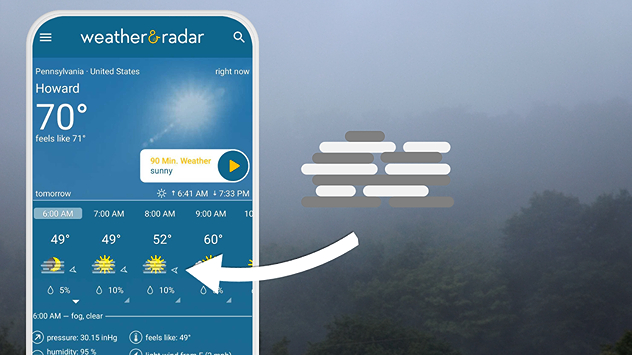Foggy weather can be both enchanting and hazardous. This complete guide will explore the nature of fog, its causes, types, effects on daily life, safety tips, and some interesting facts about fog. Whether you’re a weather enthusiast or someone who simply wants to understand the phenomenon better, this guide will provide valuable insights;
What is Fog?
Fog is a collection of tiny water droplets suspended in the air near the Earth’s surface. It reduces visibility and can create a thick blanket that alters the landscape. Fog is classified as a type of low-lying cloud and forms when the air temperature cools to the dew point, leading to condensation.
Causes of Fog
Fog can form under various conditions, and its formation is influenced by several factors:
- Cooling of Air: When warm, moist air cools down, it can lead to fog formation.
- High Humidity: High levels of humidity increase the chances of condensation.
- Temperature Inversions: When warm air traps cooler air at the surface, fog can develop.
- Proximity to Water Bodies: Areas near lakes, rivers, or oceans often experience fog due to evaporation.
- Wind Patterns: Winds can carry moist air into cooler regions, fostering fog formation.
Types of Fog
Fog can be categorized into several types based on its formation process:
- Radiation Fog: Occurs on clear nights when the ground loses heat rapidly.
- Advection Fog: Forms when warm, moist air moves over a cooler surface, leading to condensation.
- Upslope Fog: Created when moist air rises over a topographical barrier.
- Evaporation Fog: Arises from cold air moving over warmer water, causing moisture to condense.
- Freezing Fog: Occurs when fog droplets freeze upon contact with surfaces, creating ice.
Effects of Fog on Daily Life
Fog can have various impacts on daily activities, transportation, and safety:
- Travel Disruptions: Reduced visibility can lead to delays and accidents on roads and runways.
- Health Impacts: Fog can exacerbate respiratory issues due to increased pollution concentrations.
- Aesthetic Appeal: Foggy conditions can create stunning landscapes, making for beautiful photography.
- Wildlife Behavior: Some animals adapt their behaviors during foggy conditions, affecting ecosystems.
Safety Tips for Driving in Fog
Driving in fog can be dangerous. Here are some essential safety tips:
- Slow Down: Reduce your speed to enhance reaction time and visibility.
- Use Low Beams: High beams can create glare and worsen visibility; use low beam headlights instead.
- Maintain Distance: Keep a safe distance from the vehicle in front to allow for sudden stops.
- Use Fog Lights: If your vehicle has fog lights, use them to improve visibility without blinding others.
- Listen for Traffic: Keep windows down and pay attention to the sounds of nearby traffic.
Interesting Facts About Fog
Here are some intriguing facts about fog that you may not know:
- Fog Can Form Quickly: Conditions can change rapidly, leading to sudden fog formation.
- World’s Thickest Fog: The San Francisco Bay area is famous for its dense fog, known as “Karl the Fog.”
- Fog as a Weather Indicator: The presence of fog can signify changes in weather patterns.
- Fog and Temperature: Fog often accompanies temperature drops and can lead to frost formation.
Foggy weather is a captivating natural phenomenon that can create both beauty and challenges. Understanding its causes, types, and effects can help us appreciate it more while also ensuring our safety. Whether you are enjoying a serene morning walk in the fog or navigating through it on the road, being informed can enhance your experience.
Stay safe, and embrace the mystery of foggy weather!

